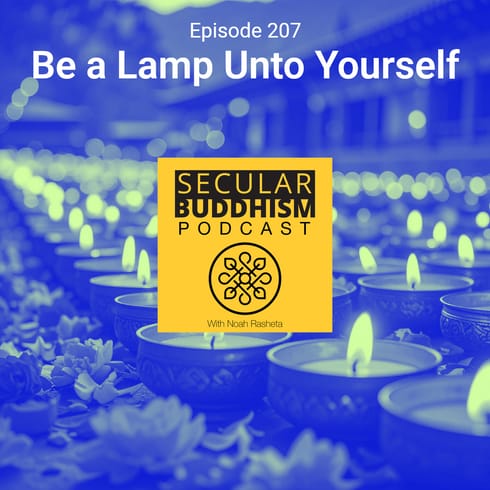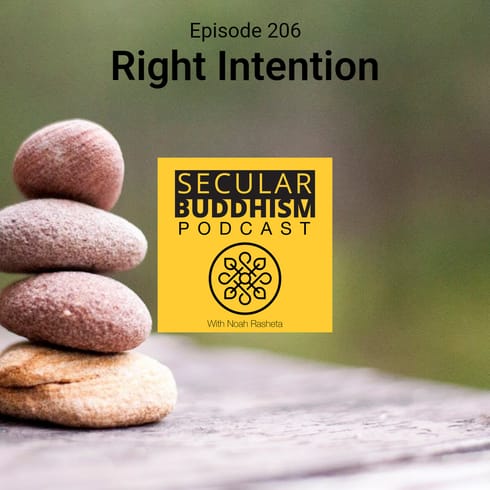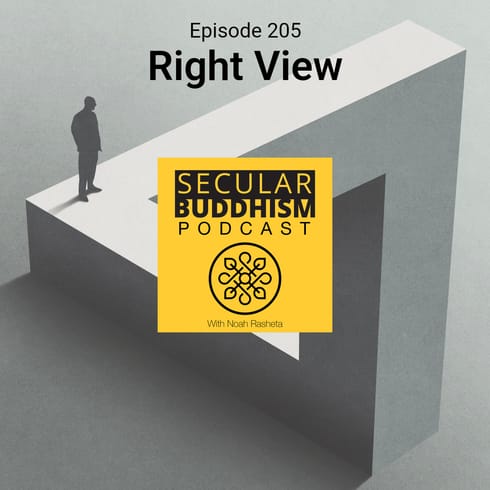
The Four Noble Truths are the most fundamental teachings of Buddhism. They serve as the foundation of the entire Buddhist worldview, and they offer a path to understanding the nature of existence and suffering.
In order to better understand the teaching of the Four Noble Truths, it will be helpful to know the translations for some of the Pali words used in the original teachings.
Dukkha (Suffering, Unsatisfactoriness, Stress, Unease)
Samudaya (Origin or Cause)
Nirodha (Cessation, Ending, or Confinement)
Magga (Path or Way)
Tanha (Craving or Desire)
Nirvana (Quenching, Liberation, Extinguishing, Release)
Dharma (Teachings or Method)
The Four Noble Truths
- Life is characterized by suffering or dissatisfaction (Dukkha). This includes frustration, dissatisfaction, and distress as part of the normal human experience.
- The cause of suffering is clinging or craving, driven by ignorance of the true nature of reality (Samudaya). This includes craving for sensory pleasures, clinging to desires, and trying to hold on to things that are impermanent. The cause of suffering is wanting things to be other than how they are.
- It is possible to be free from suffering by letting go of craving and attachment (Nirodha). This state is achieved when one lets go of grasping and aversion and rests in the calm clarity of the present moment.
- There is a path that leads to complete liberation from suffering (Magga). The Eightfold Path, also known as the Middle Way Path is the path that leads to the end of suffering.
In summary, the Four Noble Truths diagnose the problem of suffering, identify its cause, assert that it can be overcome, and provide a path to do so. This process is akin to a doctor identifying an ailment, determining its root cause, confirming its curability, and subsequently outlining a course of treatment.
1) The Problem
Life is characterized by suffering or dissatisfaction.
The first Noble Truth, known as the Truth of Suffering (Dukkha), recognizes the pervasive nature of dissatisfaction and suffering in life. According to Buddhist teachings, there are 3 distinct types of Dukkha:
Suffering of Suffering (Dukkha-dukkha)
This is the most apparent form of suffering that includes physical pain, emotional distress, and all kinds of discomfort or difficulties that we might experience in life. Sickness and old age are examples of this type of suffering.
Suffering of Change (Viparinama-dukkha)
This refers to the suffering that arises from the impermanent nature of happiness and pleasure. Everything that brings us joy and satisfaction is temporary, and clinging to these pleasures can lead to suffering when they inevitably change or disappear. For example, the joy of a new environment, or a new possession eventually fades, leading to dissatisfaction.
All-Pervasive Suffering (Sankhara-dukkha)
This is a more subtle form of suffering that refers to the underlying unease or dissatisfaction that comes from our conditioned existence. It's the deep-seated discomfort that comes from being subject to the constant change and impermanence of life, even when things seem to be going well. It's usually rooted in unskillful views or beliefs about ourselves, others, and the world around us. This type of suffering is said to be a result of ignorance and can only be fully understood and overcome through cultivating awareness and wisdom.
This truth teaches that suffering is not always overtly painful or dramatic; it's often subtle and underlies our entire experience of life. It's not just about physical pain or emotional distress but includes a more profound sense of dissatisfaction and unease that characterizes our existence.
Understanding Dukkha is not meant to lead to pessimism or a negative outlook on life. Instead, recognizing the presence of suffering in life is considered the first step toward awakening and liberation in Buddhism. By seeing the reality of suffering, one becomes motivated to investigate its cause and follow the path leading to its cessation. It encourages mindfulness, compassion, and a deeper understanding of ourselves and the world around us.
2) The Cause of the Problem
The cause of suffering is clinging or craving, driven by ignorance of the true nature of reality.
The second truth identifies desire or craving (tanha) as the primary cause of suffering in human life. The Pali word tanha is generally translated as craving, but it can also mean thirst, desire, longing, or greed. It includes both physical and mental craving.
Craving
The Buddha taught that the root of all suffering is desire or craving. Suffering is what arises when we want things to be other than how they are. This is not limited to just physical needs and wants, but also includes our mental and emotional desires.
Attachment
Alongside craving, attachment plays a crucial role in generating suffering. We become attached to people, objects, ideas, beliefs, or feelings, and this attachment can lead to suffering when we are separated from them or when they change. The impermanence of everything is a fundamental principle in Buddhism, and attachment leads us to an unproductive struggle to hold on to things that are inevitably transient.
The Three Poisons
The second noble truth is also connected to the "Three Poisons" in Buddhism: ignorance, attachment, and aversion. Ignorance leads to a misunderstanding of the nature of reality, particularly the nature of the self and the impermanence of all things. This ignorance fuels our attachment to things we like and our aversion to things we dislike, creating a cycle of craving that leads to suffering.
Breaking the Cycle of Craving
Understanding the cause of the problem is the first step towards overcoming it. By recognizing and understanding the way craving leads to suffering, one can begin to develop the wisdom and mindfulness needed to break free from this cycle.
The second noble truth emphasizes that the cause of human suffering lies in craving and attachment. It teaches that by understanding the nature of desire and learning how to let go of attachment, one can begin to alleviate suffering and move towards a more liberated and peaceful state of being.
3) Overcoming the Problem
It is possible to be free from suffering by letting go of craving and attachment.
The third noble truth proclaims that it is possible to completely cease suffering. This doesn't just mean a temporary relief from pain or dissatisfaction but a profound and enduring end to the fundamental existential suffering that pervades life.
The Paradox of Craving
If the cause of suffering is craving, and we find ourselves craving to not crave, we will only experience more craving. How can one escape this apparent dilemma? The key lies in understanding what craving really means in the Buddhist context. Craving is an unskillful and clinging attachment that comes from ignorance of the true nature of reality.
Skillful craving vs unskillful craving
Imagine a person who is striving to become healthier and wants to lose weight. Their motivation is rooted in self-care, a desire for well-being, and an understanding of the body's needs. Contrast this with another person who also wants to lose weight, but their motivation is rooted in societal pressure, self-judgment, and a fear of not being accepted.
In both scenarios, the desire to lose weight is present, but the underlying intention, approach, and relationship to that desire differ significantly.
- Skillful craving aligns with wisdom, compassion, and a balanced understanding of oneself and one's needs. It leads to actions that are beneficial and alleviate suffering.
- Unskillful craving, on the other hand, is driven by ignorance, attachment, and aversion, and tends to perpetuate suffering.
When working with craving, it's important to understand WHAT it is that we crave, and WHY we crave it. This distinction is central to the practice of overcoming the problem of suffering.
As the second noble truth identifies craving as the cause of suffering, the third noble truth involves the complete letting go or relinquishment of that craving. By relinquishing attachment to desires and cravings, one extinguishes the causes of suffering.
How do we let go of craving?
The same way we let go of our breath. When we breathe in, we take in oxygen, which is vital for life. When we breathe out, we let go of what has been used, trusting that more will come with the next breath. We don't cling to the breath we have taken in because we understand that breathing is a continuous process of receiving and releasing.
In much the same way, the practice of non-attachment involves taking in experiences, emotions, and sensations without clinging to them. We appreciate them for what they are in the present moment and then let them go, trusting that life will continue to unfold. We don't cling to pleasure or resist pain, but we accept both as natural and impermanent parts of existence.
Just as we breathe with an understanding of the natural cycle, the practice of letting go in Buddhism encourages us to release our attachments with a sense of ease and trust in the natural flow of life. We let go of our clinging to ideas, possessions, or desires, recognizing that they are transient and subject to change, just like our breath.
Many Buddhist meditation practices use the breath as an object of focus to cultivate mindfulness. Observing the breath, with its continuous cycle of in and out, can be a profound metaphor for understanding the impermanence of all things and a practical tool for developing non-attachment.
Liberation
The third noble truth offers a message of hope and liberation. While the first two truths diagnose the problem of suffering and its cause, the third truth provides the assurance that this problem can be overcome.
The third noble truth is the realization that suffering can be completely ended by letting go of craving and attachment. It's not just an abstract philosophical concept, it's an achievable goal. It requires deep understanding, practice, and personal realization, and it represents the ultimate goal of the Buddhist path: complete liberation from suffering and the attainment of Nirvana.
Nirvana (liberation) can be translated as "quenching", as in quenching thirst, or "blowing out" as in the blowing out of a fire. It can also be translated as "release" as in the release of the breath. Nirvana is a state that is free from the fire of the Three Poisons of ignorance, attachment, and aversion, and is characterized by inner peace, clarity, and wisdom.
4) The Path for Overcoming the Problem
There is a path that leads to complete liberation from suffering. The method for overcoming the problem of suffering is to walk the path.
The understanding of suffering (first truth) and its cause (second truth) leads to the realization that suffering can be ended (third truth), and this, in turn, leads to the practice of the path (fourth truth) that brings about the cessation of suffering.
The Eightfold Path / The Middle Way
In Buddhism, the Eightfold Path is commonly known as the Middle Way. It advocates for a balanced and harmonious approach to living, avoiding extremes. The Middle Way strives for a balanced approach to living life. The eight parts of the path are categorized into three fundamental elements of Buddhist practice:
Wisdom
1) Understanding: How we view ourselves and the world.
2) Intention: Cultivating intentions of non-attachment, goodwill, and harmlessness.
Ethical Conduct
3) Speech: Speaking truthfully, harmoniously, and kindly.
4) Action: Acting ethically and compassionately.
5) Livelihood: Earning a living in a way that doesn’t harm others.
Mental Discipline
6) Effort: Cultivating wholesome qualities and abandoning unwholesome ones.
7) Mindfulness: Developing mindful awareness of the body, feelings, mind, and phenomena.
8) Concentration: Cultivating deep concentration and meditative absorption.
The Buddha taught the eightfold path in virtually all his discourses, and his directions are as clear and relevant today as they were 2500 years ago.
Listen to the Podcast Episode
Explore topics
Explore pages
Subscribe
Related posts
A DOSE OF WISDOM IN YOUR INBOX
Subscribe to the newsletter to receive time-honored teachings in your inbox. This content is aimed at helping you cultivate a greater sense of inner peace. You’ll also be the first to receive updates on podcasts, events, retreats, and workshops, and gain exclusive access to content available only to subscribers.




